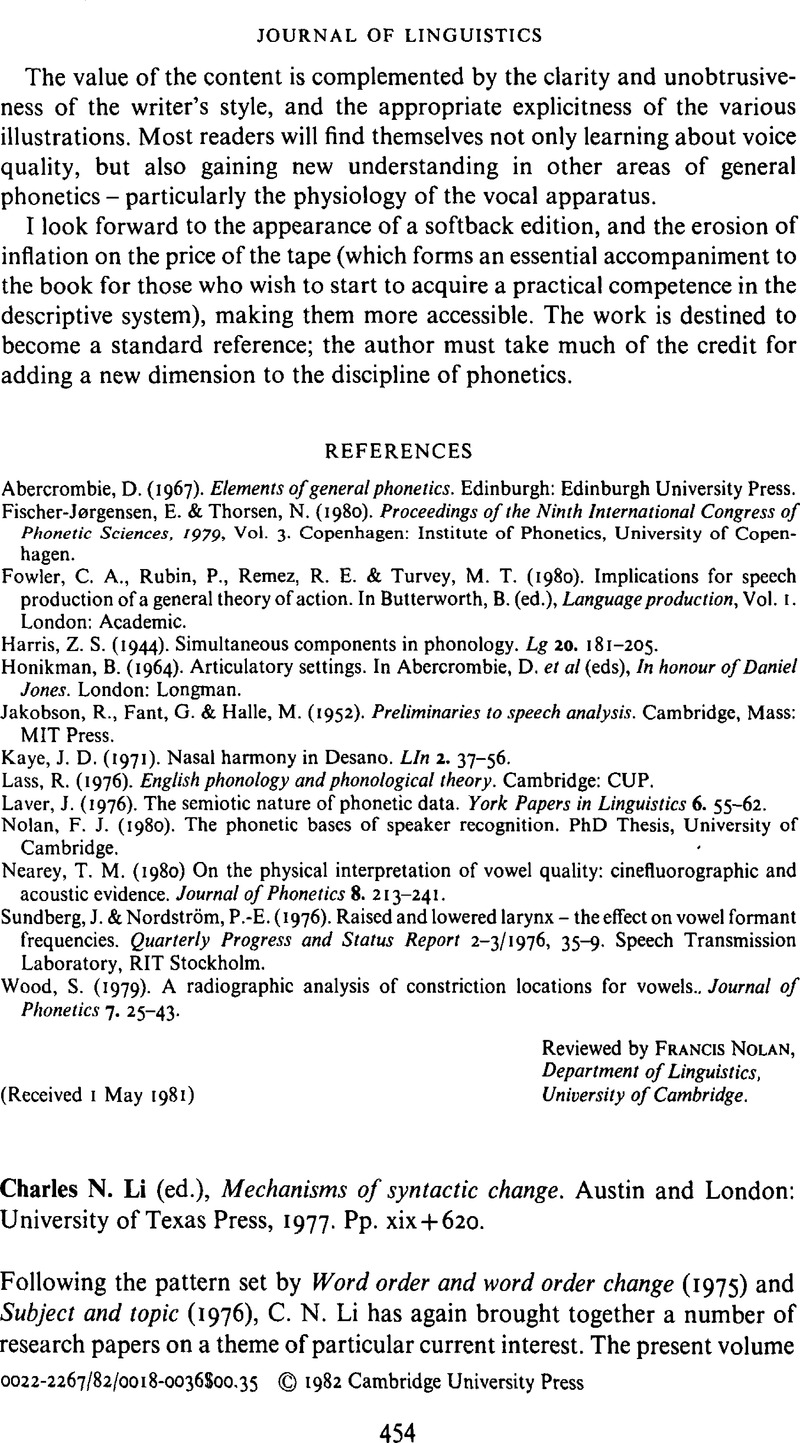No CrossRef data available.
Article contents
Charles N. Li (ed.), Mechanisms of syntactic change. Austin and London: University of Texas Press, 1977. Pp. xix + 620.
Published online by Cambridge University Press: 28 November 2008
Abstract
An abstract is not available for this content so a preview has been provided. Please use the Get access link above for information on how to access this content.

- Type
- Reviews
- Information
- Copyright
- Copyright © Cambridge University Press 1982
References
REFERENCES
Anderson, S. R. (1976). On the notion of subject in ergative languages. In Li, C. N. (ed.), Subject and topic. New York: Academic Press. 3–23.Google Scholar
Back, M. (1980). Ergativität und genera verbiim mittelpersischen Präteritum. Vortrag vordem 20. Deutschen Orientalistentag. Ms., Universität Freiburg i.B.Google Scholar
Jeffers, R. J. & Lehiste, Ilse (1979). Principles and met hods for historical linguistics. Cambridge, Mass.: MIT Press.Google Scholar
Mimer, G. B. (1973). ‘It is aspect (not voice) which is marked in Samoan’. Oceanic Linguistics 12, 621–639.Google Scholar
Plank, F. (1979b). ‘Ergativity, syntactic typology and univeral grammar: some past and present viewpoints’. In Plank (1979a). 3–36.Google Scholar




